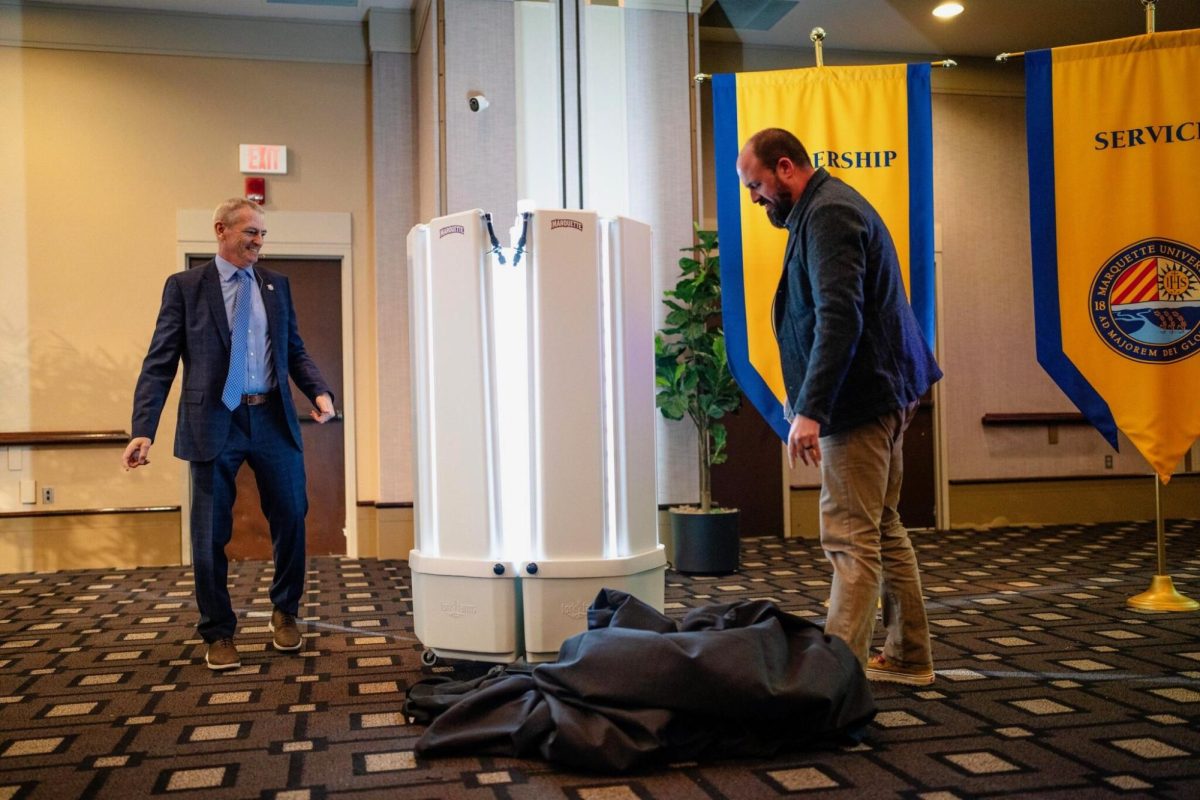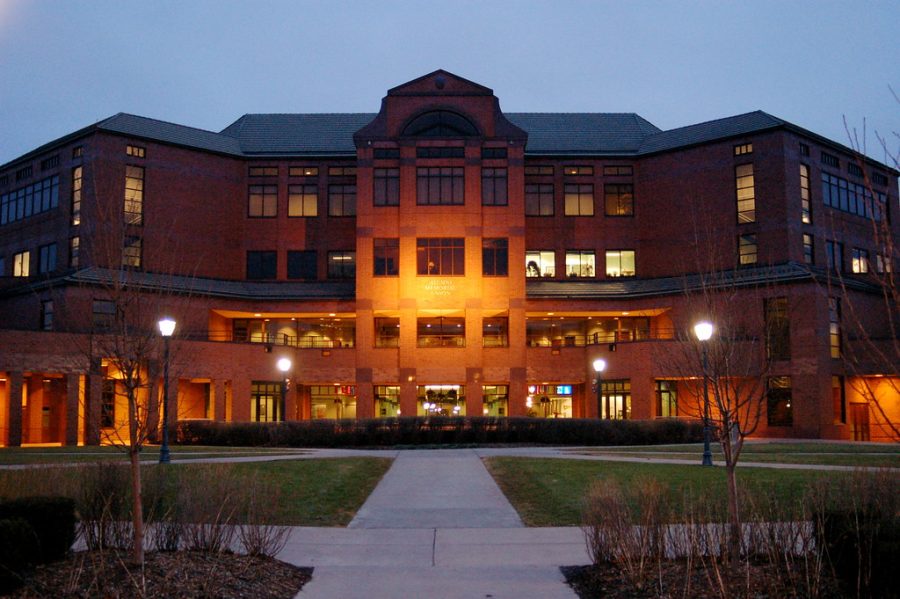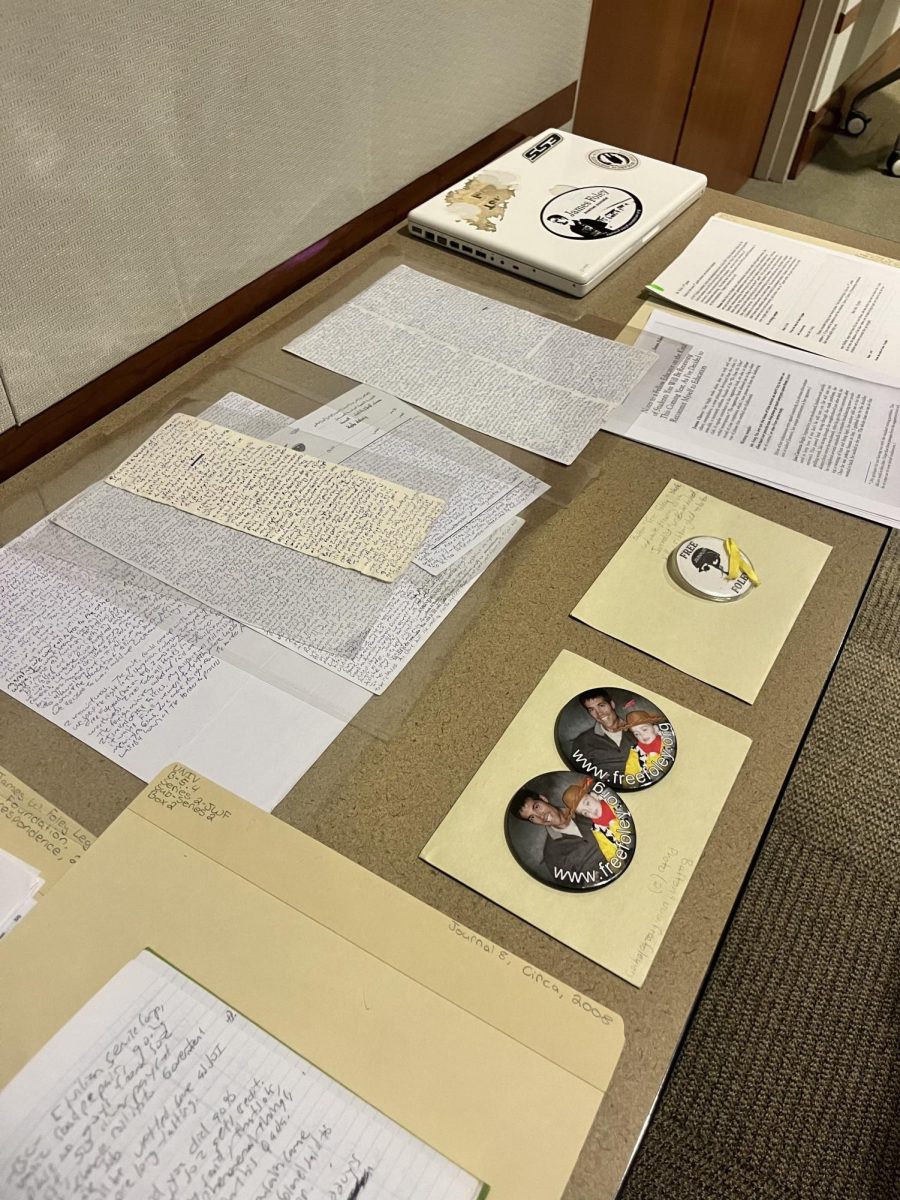
Religion and art have always been connected. Stained glass, cathedrals and most medieval and Renaissance paintings are known for their aesthetic beauty as well as their religious imagery.
Illuminated Bibles, illustrated with pigments and gold or silver leaf, are no different, save that there has only been one handwritten illuminated Bible produced by a Benedictine monastery in the last 500 years: the St. John’s Bible. While it’s hard to get a glimpse of the illuminated Bible itself, presently on tour, Marquette has gotten a copy of the fine art version, the Heritage Edition, which it will be making available for students to see during Mission Week, Feb. 7 to 11.
The original St. John’s Bible, thought up by British calligrapher Donald Jackson, was first proposed in 1995 to the Rev. Eric Hollas at the St. John’ Abbey in Collegeville, Minn., and officially commissioned in 1998. Accompanying the St. John’s Bible itself is the Heritage Edition, a limited edition series of full-size, museum quality Bibles.
According to Jim Triggs, executive director of the Heritage Program, the Heritage Edition isn’t simply a duplicate of the St. John’s Bible.
“It’s really not just a copy of the original,” Triggs said. “It’s a work in its own right.”
The Heritage Edition isn’t only different in its outward appearance, but also has a different creative process. The original resembles illuminated bibles from the medieval era using a similar process of adding handmade ink and pigments of gold written on vellum.
The Heritage Edition incorporates the same idea, but uses soft faux gold- and silver-tinted handkerchiefs, a less expensive method. It mixes modern technology with the traditional route, allowing the creators to print vivid color on cotton paper in a short development period.
“One of the ironies of this project was that it actually took 21st century technology to recreate this ancient version,” Triggs said.
Both the original St. John’s Bible and the Heritage Editions come in seven volumes, six of which have been completed at this time. Each volume has a theme of its own, reflecting its historical relationship to the Bible.
For example, Triggs said the style of the Wisdom Books volume is directly connected to the concept of wisdom itself in the minds of the ancient Hebrews.
“Wisdom is spoken of in a feminine voice and so it’s referred to as a ‘she,’” Triggs said. “So because wisdom is spoken of in a feminine voice the colors that are used in the volume tend to be more feminine.”

Marquette currently owns the first four volumes of the set, the Pentateuch, Historical Books, Psalms, and Wisdom Books, which encompass all but 13 books of the Old Testament. The remaining Old Testament books are included in the fifth volume, Prophets, and the New Testament is divided into two volumes, Gospels & Acts and the uncompleted Letters & Revelation.
During Mission Week, Marquette’s four volumes will be on display in the Alumni Memorial Union rotunda.
Matt Blessing, Marquette University Archives director, said the event ties in well with the university’s acquisition of the books, which arrived in August.
“Mission Week is a way to introduce the Heritage Edition to Marquette,” Blessing said.
A discussion panel scheduled for Monday, moderated by Matt Blessing, will feature theology professor Susan Wood and the Rev. Eric Hollas, who has been involved with the project since the idea was first created. Later that night, a prayer group will be lead by Hollas at the Chapel of the Holy Family where additional pictures of the Heritage Edition will be on display.
According to Annemarie Sawkins, associate curator at the Haggerty, the Bible’s contemporary feel is intended to draw in students for Mission Week.
“It is a fascinating project and perfect for Marquette’s Mission Week,” Sawkins said via e-mail. “Creating a modern Bible using techniques that are centuries old is a great way to teach people about the art of medieval bookmaking, not to mention the new (revised standard version of the) Bible has provided for a whole series of conversations about how to illustrate the scriptures.”
But the Heritage Edition isn’t going to be available just during Mission Week. After Mission Week is over, the four volumes will be put on permanent display in the University Archives on the third floor of Raynor Library, and will wait for the remaining three volumes to join them.
However, just because they’re in the library doesn’t mean getting a look is as easy as checking out a book. Triggs said students, faculty and university guests will have the opportunity to handle them under supervision.
He said the collection is being kept in the archives so it can be used by students now and in the future, both in the field of theology and other disciplines including history, art and English.
“We want people turning the pages and we want people exploring it,” Triggs said.
The St. John’s Bible, Heritage Edition, will be on display in the rotunda of the Alumni Memorial Union from Monday, Feb. 7 to Friday, Feb. 11, as part of Mission Week. A panel on the creation of the illuminated Bible will be held Monday at 11:30 a.m. in AMU Ballrooms A and B.








